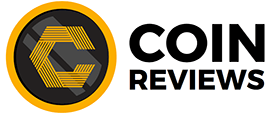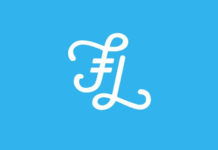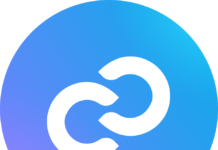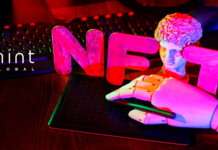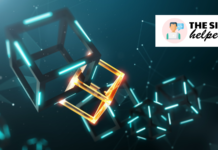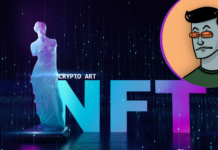
Social media has transformed the way people from around the world connect with friends and family. It has democratized the dissemination of information and created new ways for companies to connect with prospects and existing customers. Today’s new connected world revolves around universal access to publishing tools.
However, the centralized nature of the social networks undermines their true potential. Companies operating the platforms gain revenue from user-generated content but few pass any of that money along to users.
Sola was introduced to address some of these shortcomings. It operates as a decentralized social platform that provides incentives to all active users, including third-party developers. The platform is designed to work as an open ecosystem, providing access to its source code so that anyone can audit and improve it.
The founders of Sola consider most of the problems we see in social media to be symptoms. The disease, in their view, is networks’ unwillingness to view users as partners. This prevents network owners from implementing user-friendly changes to their operating model. Sola is taking the opposite approach.
Official Website: https://sola.foundation/
How Sola Works:
📱 Sick of the same old social media? Check out @solaplatform, which pays users for contributions in crypto and promises to break us all out of our online echo chambers. #SOLA $SOL pic.twitter.com/OTv8d8v5WC
— Coin Reviews (@CoinReviewsIO) March 2, 2018
Users in the Sola ecosystem do not connect by following each other. Instead, they share information with all interested users, thus creating a viral effect. The platform enables advanced sharing using artificial intelligence (AI) algorithms coupled with user feedback in the form of Tinder-like swipes. This approach allows quality content to reach a wider audience. While a bad post will go nowhere if everybody’s swiping it down, a popular post might eventually be seen by the entire Sola network if it gets enough positive up-swipes (“endorsements” in Sola-lingo).
The platform generates revenue from partnerships, user payments, and advertising, and users receive a significant share of the revenue based on a number of variables, including the quality of content posted on the network. They’re paid in SOL, the cryptocurrency that drives the Sola economy.
It is also possible to earn $SOL by participating in the Bounty Development Program, which is aimed at improving the app and the Sola network. The token can be traded for other currencies via a cryptocurrency exchange, and the platform allows users to host a Sola node on their hard drive to earn additional $SOL while strengthening the network through decentralization.
Sola prevents censorship and blocking using that decentralized architecture. There’s no central server that can be blocked or hacked. And third-party developers can create new community apps that are compatible with the core Sola architecture.
The Sola Experience

After logging in to the Sola app, users are presented with a card stack. Cards can be endorsed or skipped depending on users’ preferences. Endorsed cards are exposed to a wider audience. The concept differs from the traditional social media content feed model, and takes people outside their sometimes-insular circles of online friends. That makes it well suited to people interested in posting engaging content and making money from their social media activities.
Users earn Action Points on a daily basis, which can be used to endorse the content or create cards. The points are not linked to tokens; they have no monetary value but they play a key role in the network.
Sola presents all types of content as cards, which is a unique way to replace the feed concept. Cardification is aimed at unifying user experiences and provide flexibility since the cards can contain several pages. The approach differs significantly from the feed format that delivers one item at a time.
The stack implementation promotes user engagement better than the feed concept and can boost monetization potential. The core Sola team conducted a number of experiments before deciding to implement the stacks and cards format. Advanced machine learning and natural language processing techniques allow Sola’s engineers to automate the conversion of raw data to the card format.
The conversion can be carried out partially or in whole depending on the nature of the source content. The algorithms also consider users’ needs when converting raw data into the card format. Users are given an opportunity to add or edit the content displayed on the cards in case they’d like to make changes.
Adding a link to a card provides a simple way to display a card with the relevant title and media elements. The cards can format data from third-party sources before it is available for public viewing. Excess metadata is removed. Users can opt to incorporate all the data from the source content if they feel it is relevant to the Sola community. The platform’s advanced algorithms selects the ideal card templates and arrange the content in a user-friendly way.
Sola controls the proliferation of spam through moderation by the core team. This is aimed at ensuring a safe and conducive environment for all users.
Why decentralize social media?
Centralized networks are typically owned and controlled by a small group of people or publicly traded companies as the case might be. This has can lead to bias and undermine the democratization of the networks.
Some of the key benefits of decentralization include:
- It offers a practical way to reduce service charges
- It prevents censorship and any content blocking attempts by states
- Digital currencies minimize transaction costs compared to fiat currencies
- Users can take advantage of new operating models, such as revenue sharing

The Sola Executive Team:
Sola is run by a qualified team of professionals who have experience in various areas, including media, information technology, project management and blockchain technologies. In fact, you might be familiar with one of the team’s earlier iterations on the Sola idea: Plague, a social app that went viral back in 2014. On its surface, Plague – with its cardified content – looked a lot like Sola, but the under-the-hood technology wasn’t there yet. Now, the “Plague” idea has been taken to the next level with Sola and the blockchain.
The best part is that unlike so many blockchain projects, this isn’t all hypothetical. You can head to the app store and download Sola right now and you’ll be swiping content cards (and perhaps submitting your own content) in a matter of minutes.
Want to share the knowledge about Sola with your friends? Check out our one-minute video review.

